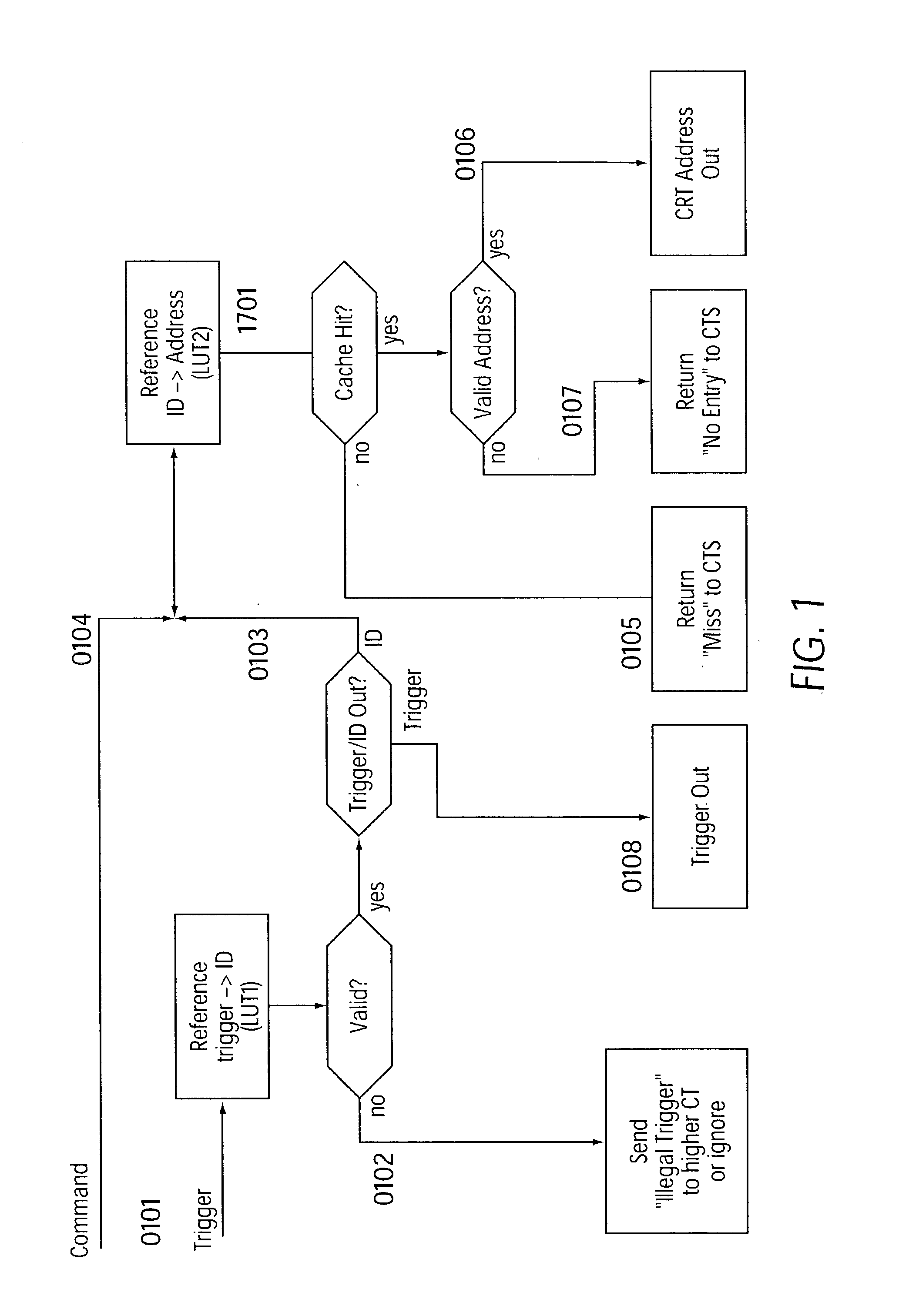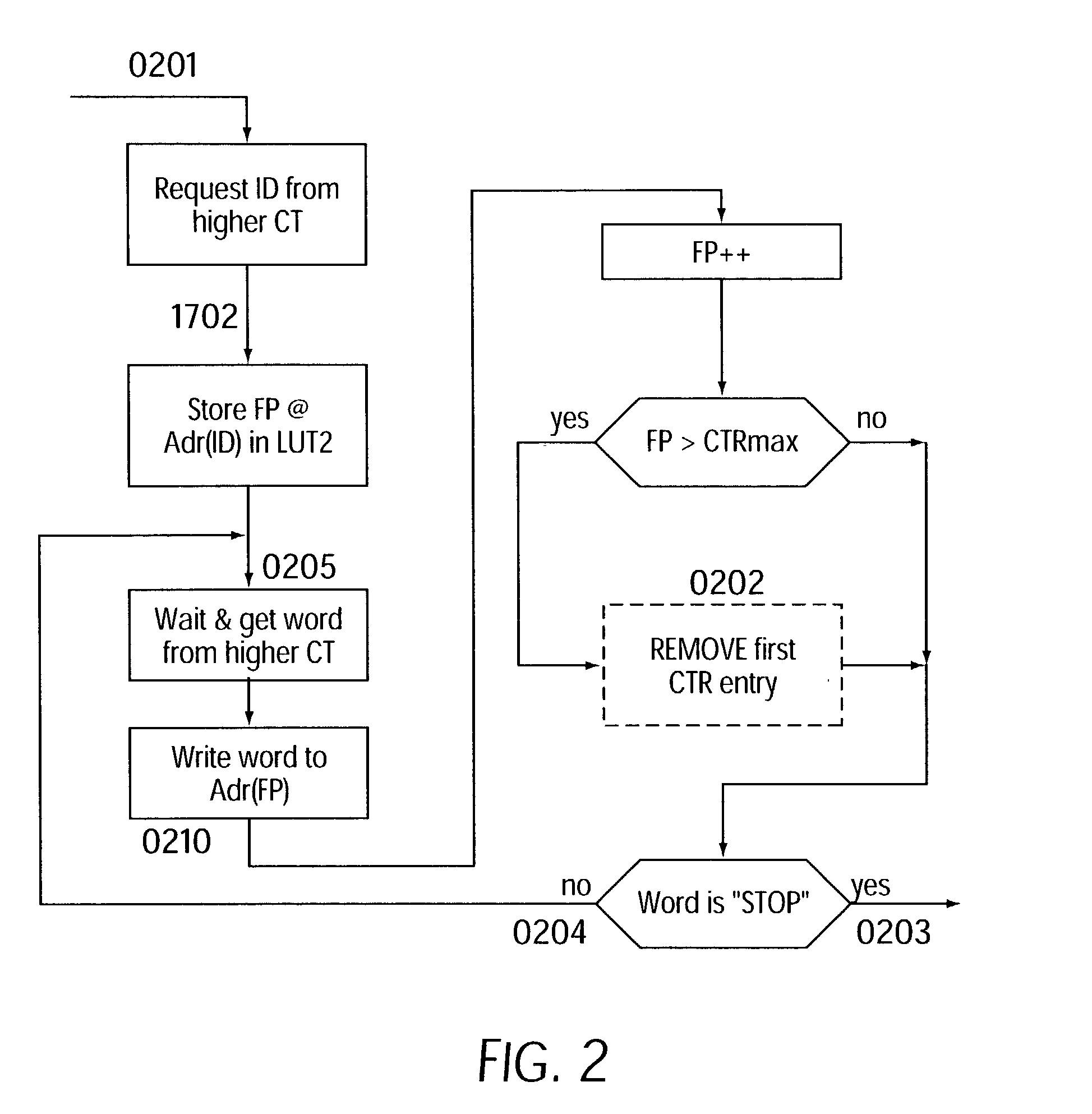Method of hierarchical caching of configuration data having dataflow processors and modules having two-of multidimensional programmable cell structure (FPGAs, DPGAs, etc.)
a configuration data and dataflow processor technology, applied in the field of hierarchical caching of configuration data, can solve the problems of affecting the performance of the above-described modules, etc., and achieves the effect of easy reversal and enhanced performan
- Summary
- Abstract
- Description
- Claims
- Application Information
AI Technical Summary
Problems solved by technology
Method used
Image
Examples
Embodiment Construction
[0021] Instead of integrating, as previously, a central and global unit in one module, with this unit processing all the configuration requests, there is a plurality of hierarchically (tree structure) arranged active units which can assume this task.
[0022] A request from the lowest level (the leaves in the hierarchy) is forwarded to the next higher level only if the request could not be processed. These steps are repeated for all the levels present until the highest level is reached.
[0023] The highest level is connected to an internal or external higher-level configuration memory which contains all the configuration data required by this program run.
[0024] Due to the tree structure of the configuration units a kind of caching of the configuration data is achieved. Accesses to configurations mainly occur locally. In the most unfavorable case, a configuration must be loaded from the higher-level configuration memory if the corresponding data is not available in any of the hierarchical...
PUM
 Login to View More
Login to View More Abstract
Description
Claims
Application Information
 Login to View More
Login to View More - R&D
- Intellectual Property
- Life Sciences
- Materials
- Tech Scout
- Unparalleled Data Quality
- Higher Quality Content
- 60% Fewer Hallucinations
Browse by: Latest US Patents, China's latest patents, Technical Efficacy Thesaurus, Application Domain, Technology Topic, Popular Technical Reports.
© 2025 PatSnap. All rights reserved.Legal|Privacy policy|Modern Slavery Act Transparency Statement|Sitemap|About US| Contact US: help@patsnap.com



